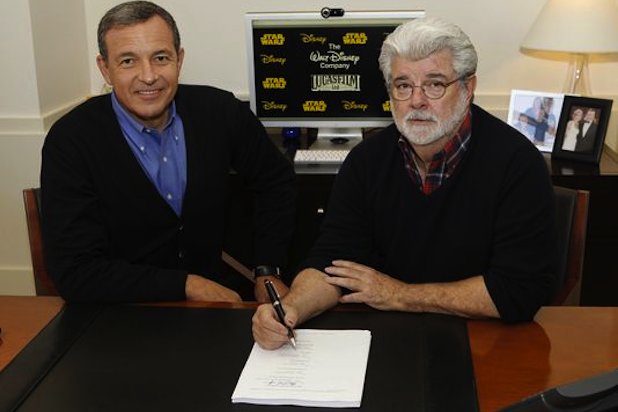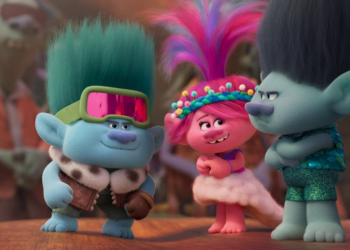I’m a Bob Iger stan. Or, at least, I’m a Bob Iger Twitter stan.
I can’t help it. Getting push notifications for his tweets is like Christmas morning each time he takes to the Internet. Posts typically arrive with Iger giddy about a new project, sometimes becoming confused with the subtleties of Twitter. One time he posted about Lucasfilm head Kathy Kennedy and mistakenly tagged a Kennedy parody account. This year on the anniversary of his being named Disney CEO, he tweeted about himself in the third person. Sometimes –– these are my personal favorite –– he’ll chime in on Disney rumors or criticism with sarcasm, such as when he rebuked Captain Marvel naysayers by claiming Disney would build “a Captain Marvel land with 50 Captain Marvel attractions, plus Captain Marvel cruise ships, hotels, and parades.” HE. IS. WORTH. THE. FOLLOW. GO. FOLLOW. HIM.
Anyway, these remarks (both in tone and in typo errors) feel out of place for the otherwise professional, businesslike stance Iger takes nearly everywhere else he publicly communicates. For the leader of a major corporation, Iger’s tweets humanize him and remind us that he’s a real person with, apparently, quite an offbeat personality that doesn’t often come across in interviews. The same revelatory experience is found in Iger’s new book, The Ride of a Lifetime: Lessons Learned from 15 Years as CEO of The Walt Disney Company. Curiously published from Random House rather than Disney Editions, the book pairs legends from his Disney tenure with practical leadership advice. This goes all the way back to 1974, when Iger began his first job with ABC. Many times throughout the book, Iger writes directly to the reader with wisdom relating not just to the business world, but to professional relationships, work/life balance, friendships in the workplace, and other topics. The purpose is clearly to impart wisdom from major career moments rather than be a biography, and the extrapolation of proverbial business lessons is a large part of the narrative here.
The book reads as surprisingly candid, with Iger not beating around the bush at any moment. He discusses with minimal secrecy the security measures of a potential Walt Disney World terrorist attack. He talks at length about the muddled reputation Roy E. Disney carried, marred by a rosy public-facing image the company projected. He openly shares the exit of former CEO Michael Eisner, a tale Iger claims was partially falsely reported in the widespread book Disney War. He’s very direct in discussing the flaws of his present and prior colleagues and supervisors, again pointing those attributes back to a value the person did or didn’t exemplify in an attempt to illustrate a point to the reader.
At the same time, though, he’s always fair (or, at least, appears to be, having no way to verify without knowing the subjects personally). Just as directly as he calls out weaknesses, he acknowledges his own mistakes too, and he equally takes time to build upon others’ strengths. His extensive sharing about the friendship he shared with Steve Jobs is particularly touching and revelatory. It’s within this realm that the true merit of Iger’s book is found, at least for the Disney fan: Here we find stories we’ve never heard this side of before (deleted scenes, if you will), events that we’ve only previously known through the lens of facts-only news articles or misconstrued rumors. Here, from the direct source, we have missing moments from Disney history suddenly and delightfully revealed in incredible detail.
Disney usually waits a while to share its history. Though there’s the usual fare of behind-the-scenes footage with each new home video release, these still feel relatively sugar-coated because the product is still new on the market. It’s not until a project establishes itself as a time-tested classic (/until there’s no danger of it losing money) that we might hear the real story of what went down –– the hurdles, the obstacles, the production challenges, the difficult conversations, the creative disagreements. It wasn’t until the Platinum Edition DVD collection began in 2001 that we really heard Disney share the full scope of production stories from its Renaissance-era films of the ’90s. It’s 2019 and we’re just getting scraps of tales from the making of 2009’s The Princess and the Frog as its tenth-anniversary festivities set in motion. Likewise, Bob Iger has been CEO of The Walt Disney Company since 2005, and while we know the basics of what he’s accomplished, we haven’t really heard the full extent of these important moments in Disney history… (dramatic music) until now.
With Iger’s reign largely anchoring on acquisitions of existing brands into the Disney fold, each of these purchases takes a significant portion of the book, beginning with Pixar and continuing with Marvel and Lucasfilm, and even touching on Fox at the end. We find out what Steve Jobs told Iger just 30 minutes before the Pixar purchase was announced that could have reversed the deal. We hear what convinced Marvel’s prior owner to consider selling. We discover what happened behind the scenes with George Lucas during the production of The Force Awakens. Iger’s business acumen throughout keeps this prose from being overly gossipy –– it always has a point, and (again, seemingly) always shares a fair perspective without being skewed or opinionated.
For a Disney fan, this reads as a soap opera with some sage advice sprinkled throughout. For those seeking a leadership-oriented book, this reads as an excellent delve into the mind of one of the world’s most prominent leaders, offering helpful anecdotes guiding through his intricate thought processes. The “life lessons” aspect of the book might be a bit tangential at times, but this is forgiven by Iger’s obvious passion for his career and his clear intent to make this book worthwhile for those who read it. Like his Twitter profile sometimes lets slip, Bob Iger loves what he does. And he equally loves sharing it. We have no choice but to stan.










